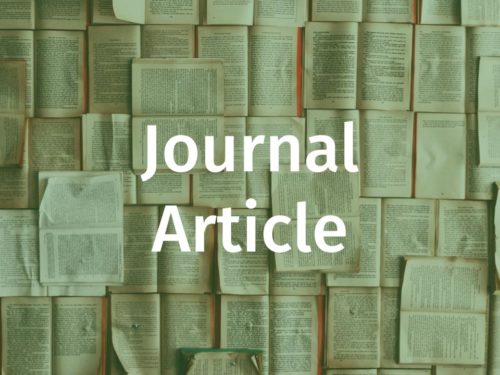There are manifold similarities between Niger and Mali in terms of their history, geography, demography, societal challenges, and security threats. Nevertheless these two countries differ quite substantively in how stable they are. An article about peacebuilding in West Africa.
Abstract
Despite the manifold similarities between Niger and Mali in terms of their history, geography, demography, societal challenges, and security threats, these two countries differ quite substantively in how stable they are. While Mali came close to state collapse in 2012, Niger has avoided another Tuareg rebellion since 2009. Niger’s relative stability can largely be attributed to its success in making peace sustainable by creating inclusive societal structures. Mali, on the other side, remains a weak state and has failed to build on peace agreements which explains its continuous recurrence into conflict.
Mali and Niger have faced many of the same challenges in the past decades since their independence in 1960. Most importantly, they have confronted the same security threats. Both have dealt with Tuareg rebellions and currently fight jihadist terrorist groups. Nonetheless, Mali was on the brink of collapse in 2012 and is currently home to the deadliest contemporary UN mission. Niger, on the other hand, is considered to be comparatively stable. This paper explores some factors explaining the different paths of two strikingly similar neighbors.
Both former French colonies, the two countries became independent states in 1960. Today, both have a relatively low Human Development Index (Mali 0,427) and Niger (0,377)[7]. Both were ruled autocratically until the early 1990s, before making transitions to democracy (Mali in 1992 and Niger in 1993)[5]. Moreover, they are strikingly similar in their demographic make-up. While Mali counts 19 million inhabitants, Niger stands at 22 million[8]. Both countries have remarkably young populations with median ages of 16 years (Mali) and 14,8 years (Niger)[1]. Both countries’ territories are to large extents desert or semi-desert[6].
Crucially, both countries exert very little control over their territory and borders. Porous borders have allowed violent actors to enter both Mali and Niger and continue to pose a threat to their civilian populations. All of these factors contribute to weak governance and state presence which have left space for violent actors to emerge, compensate some state functions, and establish alternative administrative structures.
Spill-over shocks
Mali and Niger have both faced similar shocks, e.g. the Tuareg rebellions in their northern regions as well as the creation of Islamist and jihadist groups. In both cases, these shocks’ origins are difficult to classify as domestic or foreign. Mostly, they are border-transcending phenomena that found their entry into Mali and Niger from their neighboring country and then took root in the countries’ northern regions. For example, the overthrow of Gaddafi in Libya in October 2011 led to the expulsion of Tuareg fighters from southern Libya which subsequently returned to northern Niger and northern Mali[3]. The vacuum of territorial control that followed gave rise to Islamist and jihadist groups.
It is important to point out that Tuareg, Islamist, and jihadist identities are not separate, but often overlap. Alliances between them are fluid and form ad-hoc, based on shared interests and common enemies. Following the Tuareg uprising in northern Mali in 2012, Tuareg and jihadist armed groups took control of Malian regions such as Gao, even despite the French military intervention of Operation Serval in January 2013. Furthermore, the jihadist threats in both Mali and Niger are the result of cross-border incursions of jihadist groups that have their base in one of their neighboring countries.
Structural flaws of the Algiers Agreement
The 2015 Algiers Agreement on Peace and Reconciliation was signed between the Malian government and the umbrella group of ex-jihadists and northern secessionist Tuareg and Arab rebels (the Coordination of Movements of Azawad – CMA) as well as the platform of pro-unity militias. It came as the fifth agreement since 1990 but failed to remedy the shortcomings of prior agreements. Chief among the flaws of the 2015 Peace Agreement is that it replicates many of the provisions that can already be found in its predecessors and that have not been implemented sufficiently thus far, such as decentralization and better regional development for the north. The peace process which began with the signature of the 2015 Peace Agreement has been undermined by a persistent lack of trust among the signatures. The CMA initially boycotted the signing session and only joined the Accord one month later. The CMA and the government have accused each other of bad faith and a lack of sincerity in implementing the Agreement[6]. Furthermore, the relationship between CMA and the Platform continues to be undermined by a long history of violence[6].
Moreover, as Thurston (2018) notes, the Agreement’s has two major structural flaws: First, by having excluded those jihadist groups which the government perceived to be hostile to a solution, these excluded groups are incentivized to undermine the Agreement. Second, by inviting armed groups to the negotiation table, new groups are incentivized to take up arms and perpetuate the conflict, therefore making the implementation, and peace, less likely. Clearly, it is difficult to strike a balance between these two points. There is a number of reasons why Niger has been more resilient to rebellions than Mali.
Building societal resilience and institutionalizing conflict prevention
It can be argued that Niger’s societal structure and geography makes it less prone to armed rebellion carried out by minorities. While Niger may have a larger percentage of Tuareg in its population (10%), its Tuareg are better integrated into its society: they are part of multiethnic communities and seldomly represent the majority in the regions and cities they inhabit[5]. By contrast, Mali’s northern cities like Kidal have Tuareg majorities which hold grievances against the south. Furthermore, Mali’s Tuareg perceive integration into the Malian state to be degrading and moving downwards in society[3]. Niger does not have as strong a north-south divide as Mali. Agadez and Niamey are better connected than Goa and Bamako. Moreover, although there is cross-border cooperation between Tuareg in Mali and Niger, the solidarity with Tuareg groups in the neighboring country may be too weak to provoke spill-overs from Mali to Niger. Moreover, after the disintegration of Libya and in the wake of the 2012 Tuareg rebellion in Mali, Niger began operation Mali-Bero, deploying soldiers to its western border, doubling their salaries and paying local groups to disarm returning Tuareg fighters[5]. These factors are vital when explaining why Niger has not been uprooted by Tuareg insurgencies as often as Mali.
Mali can be said to frequently resort to peacemaking efforts, while failing to deliver on peacebuilding[5]. That is to say that Mali has ended its recurrent rebellions by drafting hybrid short-term arrangements to end hostilities but fails to implement measures that would consolidate peace and prevent a recurrence of conflict. For the reasons mentioned above, Mali does not dispose of the institutions that would lead to peacebuilding. Regional development initiatives like the Special Programme for Peace, Security, and Development in Northern Mali have not delivered the economic development in northern Mali, but instead provoked resentment and suspicion of Mali’s Tuareg groups.
Niger by contrast has laid the foundations for a more sustainable peace by two primary procedures: efficient decentralization and reintegration policies on the one hand, and a long-term format to prevent conflict: the High Authority for the Consolidation of Peace (HACP).
First, after the Ouagadougou Accord of 1994, Niger gave Tuareg communities a key stake in the country’s stability by decentralizing political power and appointing Tuareg (and other non-Hausa and non-Djerma) leaders to high offices and political positions of power[5]. A majority of cities in Niger’s Agadez region have Tuareg mayors[5]. Since the 2007-09 rebellion, Niger has even begun including rebellion leaders in government cabinets and leading business roles.
In addition to these integration and decentralization measures, Niger has boosted local development by reforming its Mining Code in 2013, thereby dedicating 15% of mining revenues to local development[5]. Not only does this policy encourage economic growth, thereby reduce tension and inequalities between wealthier and poorer regions, but it also gives Tuareg leaders a stake in Niger’s stability: conflict and hostilities would make mining impossible and thereby hurt their own prosperity.
Secondly, the HACP has given Niger’s a “lasting institutional architecture” for building peace regardless of who serves as president[3]. Therefore, the HACP was depolitized the reconciliation process and given continuity to the peace process since the 1990s. It plays an early warning-function for the National Security Council[2]. It aims to facilitate dialogue between Niger’s various communities and prevent conflicts by building confidence, and by offering a forum to address socio-economic problems[4]. Efforts to establish a similar authority in Mali have failed in the past, because their frameworks were not inclusive enough and eventually broke down.
Conclusion
Niger’s relative stability can largely be attributed to its success in making peace sustainable by building inclusive societal structures. This has led to integration of minorities, economic development of rural areas, and decentralization of political power. Crucially, these measures have given included former combatants in the solution. Mali on the other hand is caught in a vicious cycle where state weakness begets violence and vice versa.
The main difference between Niger and Mali is therefore that Niger managed to supplement its top-down peacemaking process with a bottom-up peacebuilding process. It has rooted reconciliation efforts in society and giving former combatants a stake in the peace they signed up for.
Another version of this article will be available at the European Student Think Tank.
Author Description
Stefan Pfalzer serves as President of the European Student Think Tank 2019-2020. He is currently pursuing a Double Master’s Degree in International Security and Political Economy at Sciences Po Paris and London School of Economics. He has previously worked in European affairs in Brussels & Vienna, in conflict research in Tunis, Rabat and Vienna, as well as at the United Nations in New York.
References
[1] Central Intelligence Agency Library (2020): The World Factbook: Median Age. [online] Available at: https://www.cia.gov/library/publications/the-world-factbook/fields/343rank.html.
[2] Elischer, S. (2018): Defying the odds? Nigerien responses to foreign and domestic security challenges. West African Papers, No. 11, OECD Publishing, Paris.
[3] Guichaoua, Y. & M. Pellerin (2018): Making Peace, Building the State. Relations between the Central Government and the Sahelian Peripheries in Niger and Mali, IRSEM & IFRI, Étude de l’institut de recherche stratégique de l’École militaire, issue 51 (2018), p. 30.
[4] HACP (2020): Mission de la HACP. [online] Available at: http://www.hacp-niger.org/missions/.
[5] Pezard, S. & M. Shurkin (2015): Is there a Nigerien Model of Resilience? in: Achieving Peace in Northern Mali: Past Agreements, Local Conflicts, and the Prospect for a Durable Settlement. Rand Corporation, p. 63.
[6] Thurston, A. (2015): Mali’s tragic but persistent Status-Quo, RLS Research Papers on Peace and Conflict Studies in West and Central Africa, p. 13.
[7] United Nations Development Programme (2020): Human Development Data (1998-2018). [online] Available at: http://hdr.undp.org/en/data.
[8] World Bank (2018): Population, total. [online] Available at: https://data.worldbank.org/indicator/sp.pop.totl.










